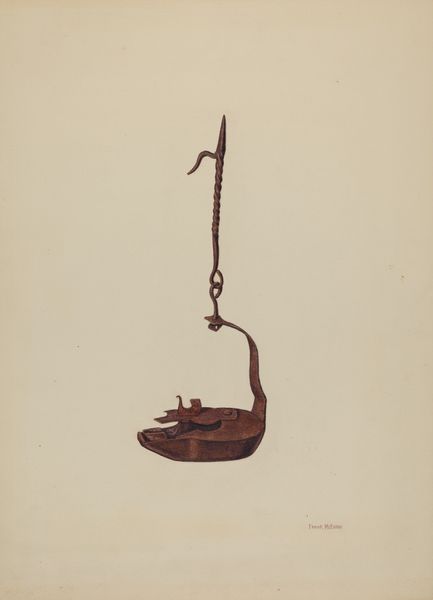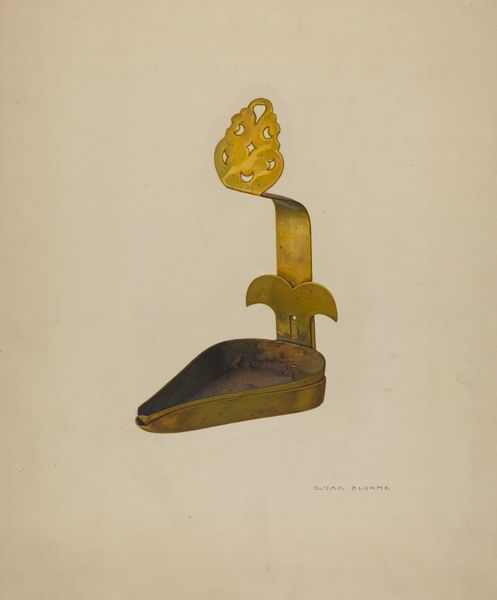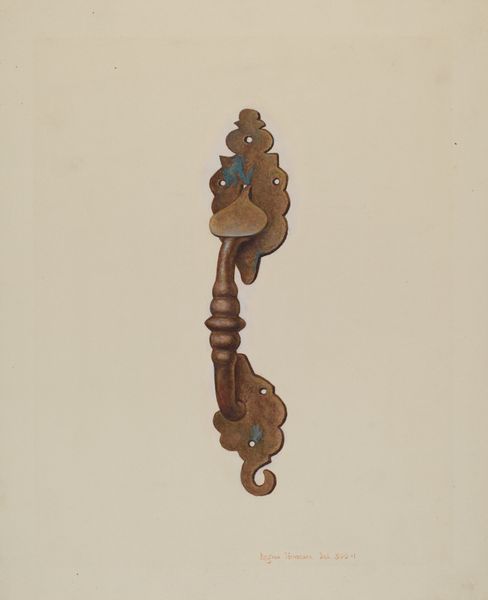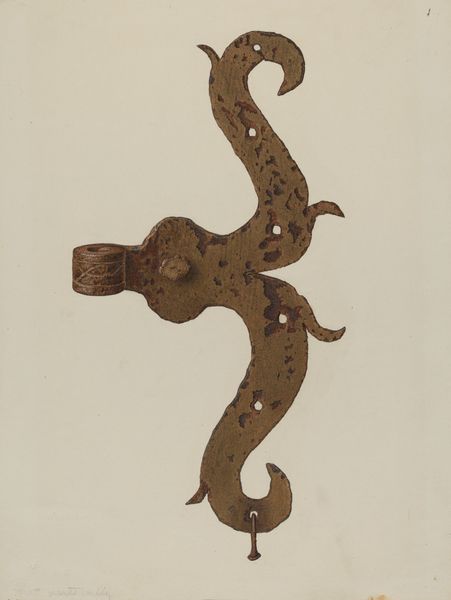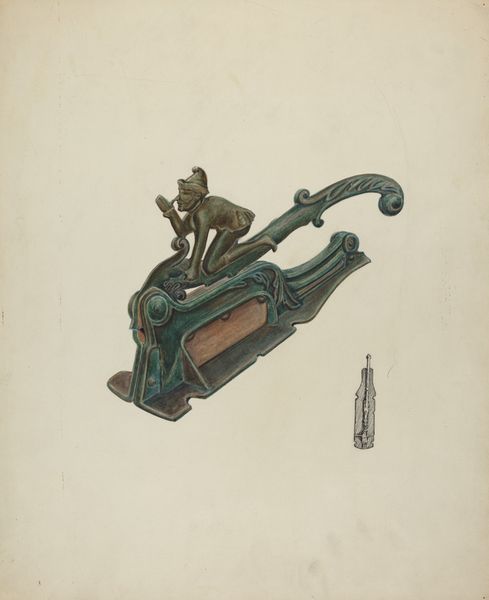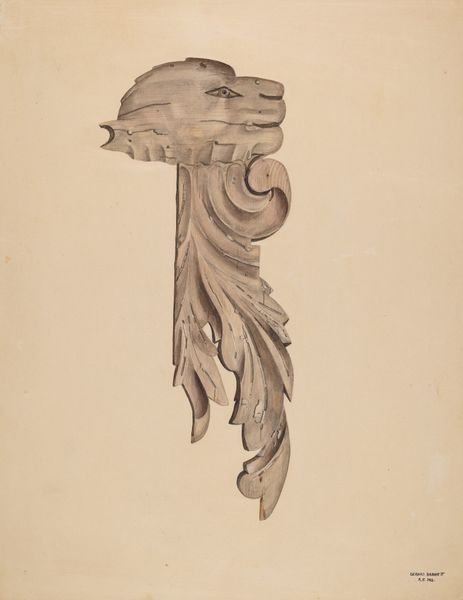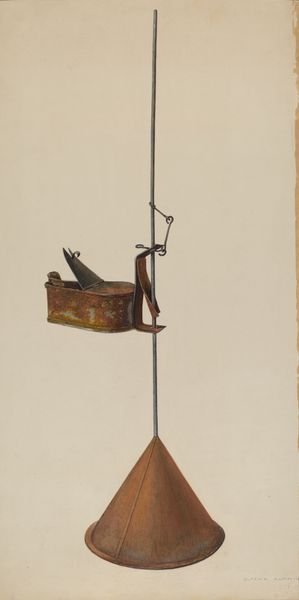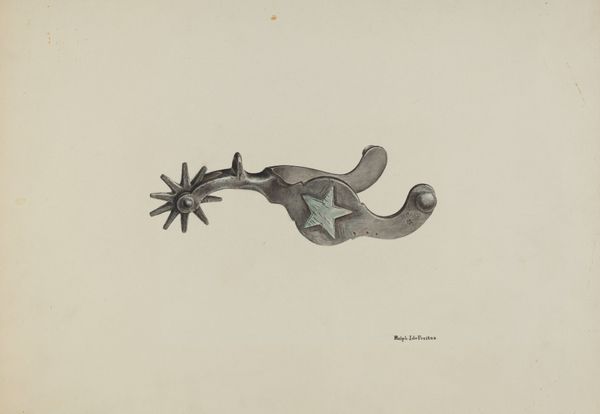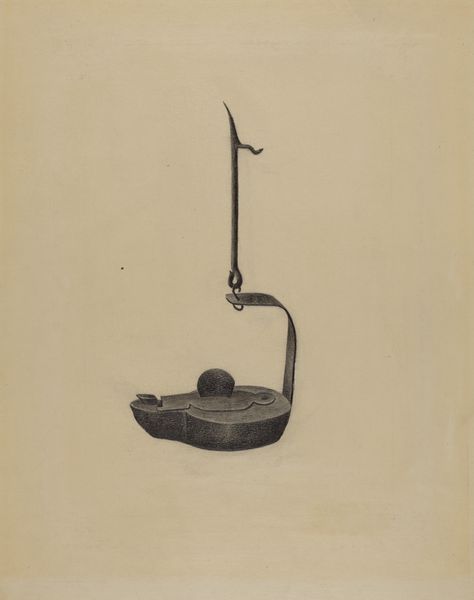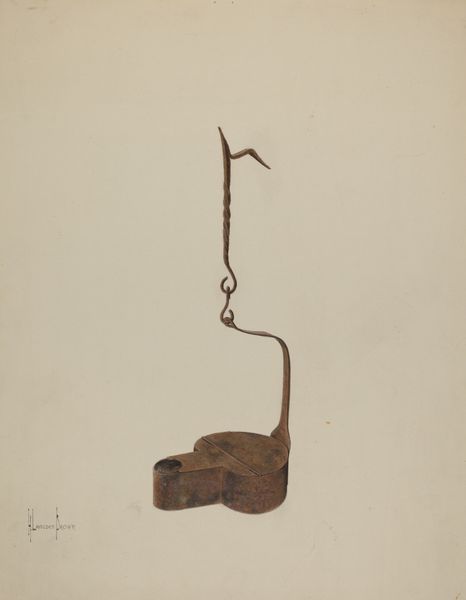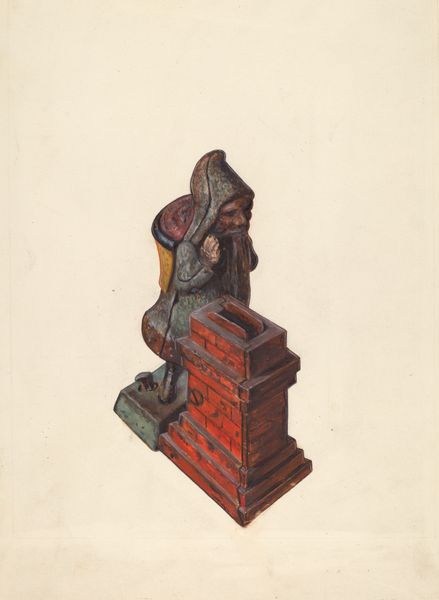
drawing, watercolor
#
drawing
#
watercolor
#
watercolour illustration
#
modernism
#
watercolor
Dimensions: overall: 35.9 x 26.8 cm (14 1/8 x 10 9/16 in.) Original IAD Object: 7 1/2" long; 3 1/2" in diameter
Copyright: National Gallery of Art: CC0 1.0
Curator: There’s a striking quietude to this piece, wouldn't you say? It’s Robert W.R. Taylor's "Grease Lamp," a watercolor drawing created between 1935 and 1942. Editor: Absolutely. My first thought was 'patina'. It's as if the painting itself has aged like the lamp, acquiring this deep sense of history. Curator: Indeed. Taylor’s choice of watercolor really captures that sense of muted time. It avoids any boldness, prioritizing subtlety to invite introspection. What does the image communicate about resourcefulness during the Depression era? Editor: I read this lamp as a powerful signifier of cultural continuity but also as a stark commentary on systemic inequality. Consider how the materials and function contrast—a crude tool adorned with embellishments speaks volumes about those forced to make do with limited means while striving for beauty or dignity, even in dire circumstances. It almost romanticizes poverty through art, which invites ethical questioning. Curator: It makes me wonder about the original context of the lamp itself. Was it purely functional, or was there some intention toward adornment in its original creation? The stylized top seems at odds with its simple purpose. Editor: That’s where I see resistance. Within the parameters of scarcity, imagine the ingenuity of making an object functional and visually expressive. I see not just the need for light but also the desire for visual pleasure. Perhaps Taylor is underscoring this human tenacity against all odds. What emotional response does the art elicit in you? Curator: For me, a tender acknowledgment of resilience. The quiet light implied in the image seems to offer both comfort and a soft reminder of persistence. It almost has a prayerful quality, capturing the subtle power of mundane objects to embody our history and spirit. Editor: And to critically reflect on history while also imagining what's yet possible. To illuminate not just our spaces but also our understanding.
Comments
No comments
Be the first to comment and join the conversation on the ultimate creative platform.
